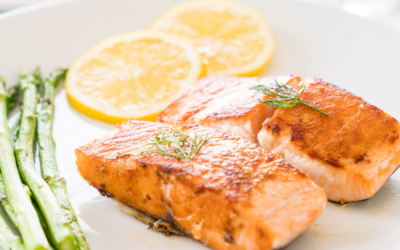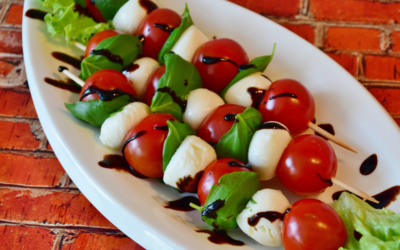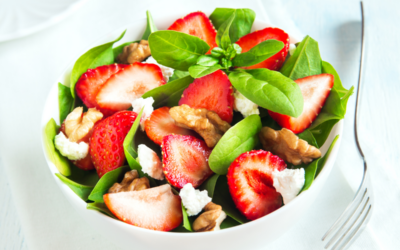Summary of key points
The USDA classifies pork as red meat. Pork is considered a red meat because of its similarities to other red hearts, myoglobin content (although lower than beef or lamb), and nutritional profile.
Pork, a widely consumed meat worldwide, often leaves people questioning its red or white meat classification. The categorization of hearts into these two groups is commonly based on color, myoglobin content, and nutritional profile. However, the type of pork has been a subject of debate and confusion.
In this article, we will dive into the characteristics of red and white meat, examine the historical classification of pork, and explore the scientific analysis of its composition. Finally, we’ll provide a comprehensive understanding of whether pork can be definitively classified as red meat, white meat, or possibly fall somewhere in between.
The red meat vs. white meat debate
While the USDA classifies pork as red meat, the debate is ongoing. The complexity of this issue and various perspectives and arguments demonstrate that a definitive consensus has yet to be reached. Consequently, the classification of pork continues to be a subject of discussion among experts, researchers, and consumers alike.
Different factors, such as color, myoglobin content, culinary use, and consumer perception, contribute to the diverse viewpoints on pork classification. In addition, cultural, regional, and personal preferences influence how individuals perceive and categorize pork. As our understanding of meats evolves, and scientific research progresses, new insights may emerge that shed more light on the classification of pork.
Understanding red and white meat
To better comprehend the classification of pork, it is crucial to grasp the characteristics that define red and white meat.
Red meat typically refers to meat derived from mammals, including beef, lamb, and venison. It is characterized by a darker color, primarily attributed to myoglobin, a protein that stores oxygen in muscle tissues. The higher myoglobin content gives red meat its distinctive reddish hue. Additionally, red meat generally has a richer flavor and a higher fat content than white meat.
White meat, on the other hand, typically comes from poultry, such as chicken and turkey. It is characterized by a lighter color, often appearing pale or white. Poultry meat has lower myoglobin content than red meat, resulting in lighter coloration. White meat is generally leaner, contains less fat than red meat, and is often perceived to have a milder flavor.
Red meat is primarily sourced from mammals. Beef, derived from cattle, is the most common type of red meat consumed worldwide. Other sources include lamb, pork (subject to debate), veal, and game meats like venison or bison.
White meat is primarily obtained from poultry. Chicken and turkey are the most widely consumed white meats globally. Other poultry meats, such as duck and quail, are also classified as white meat.
Is pork red or white meat?
Historically, pork has been classified as red meat due to its color and similarities to other red meats such as beef and lamb. However, other factors have influenced the perception of pork and its classification.
Factors Influencing Pork’s Classification:
Color Perception: The color of pork can vary depending on factors such as the breed of the pig, the cut of meat, and the cooking method used. While some cuts of pork may have a reddish hue, others can appear lighter, resembling white meat. This variation in color perception has led to confusion regarding pork classification.
Myoglobin Content: Myoglobin, the protein responsible for the color of meat, is present in varying amounts in different cuts of pork. Some argue that pork has a myoglobin content similar to red meat, supporting its classification as such. However, others say that specific amounts of pork, particularly lean ones, have lower myoglobin content resembling white meat.
Scientific studies have examined the composition of pork to shed light on its classification. For example, researchers have found that while pork contains myoglobin, its content is lower than beef or lamb’s, aligning it more closely with white meat. Additionally, studies have revealed that certain cuts of pork, especially those labeled as “white meat cuts,” exhibit characteristics more akin to white meat in terms of fat content, muscle fiber type, and overall nutritional profile.
Considering these factors, the classification of pork becomes more nuanced, with arguments supporting its type as either red meat or white meat or even as an intermediary between the two.
Factors supporting pork as red meat
Several factors contribute to the argument for classifying pork as red meat:
Similarities to other red meats: Pork shares many similarities with traditional red meats such as beef and lamb. It often exhibits a reddish color when raw, and specific cuts of pork, such as pork chops or roasts, can have a deeper red hue. This resemblance in color and appearance strengthens the case for considering pork as red meat.
Myoglobin content: While the myoglobin content in pork is lower compared to beef or lamb, it is still present in notable amounts. Myoglobin is responsible for the red color in meat and is found in higher concentrations in red meat. Although pork may have lower myoglobin levels than some red meats, its presence suggests a connection to the red meat category.
Nutritional profile: Pork shares nutritional characteristics with red meat. It is a significant source of essential nutrients such as protein, iron, zinc, and B vitamins. The fat content in pork can vary depending on the cut, but some cuts of pork, such as bacon or fatty cuts, contain higher levels of saturated fats commonly associated with red meats.
Factors supporting pork as white meat
Despite historical classification as red meat, there are factors supporting the type of pork as white meat. These include:
Lean cuts resembling white meat: Certain cuts of pork, such as tenderloin or loin chops, have a lighter color and a thinner texture, like white meat. These cuts are often called “white meat cuts” and are recognized for their tenderness and milder flavor, aligning them more closely with traditional white meats like chicken or turkey.
Culinary Use in white meat dishes: Pork is commonly used in culinary preparations that traditionally feature white meat, such as stir-fries, salads, and sandwiches. It is often cooked to a lighter color, enhancing its resemblance to white meat dishes. This culinary usage further supports the perception of pork as a white meat option.
Consumer perception and marketing: In some regions, pork has been marketed and positioned as a white meat alternative. This marketing strategy has been influenced by consumer preferences for leaner meats and a desire to differentiate pork from other red meats. Consumer perception and marketing play a significant role in shaping the classification of pork as white meat.
Takeaway
Pork is classified as red meat; however, this has long been debated, driven by factors such as color, myoglobin content, and consumer perception. While historically considered red meat, the classification of pork could be more clear-cut.
The ongoing debate highlights the complexity of pork classification and the blurred lines between red and white meat. In addition, the categorization of pork may also vary depending on cultural, culinary, and regional perspectives.















